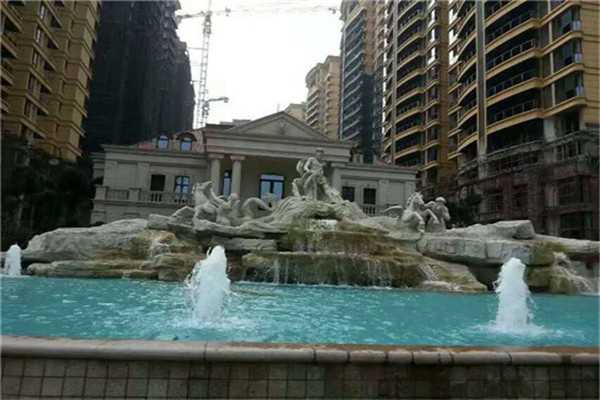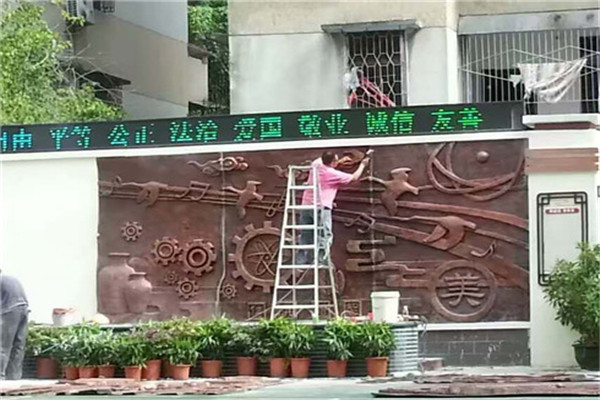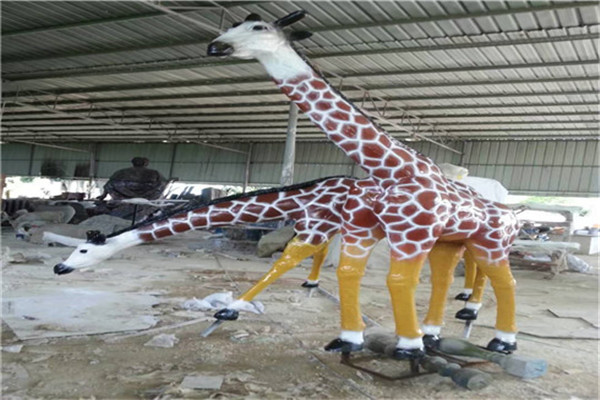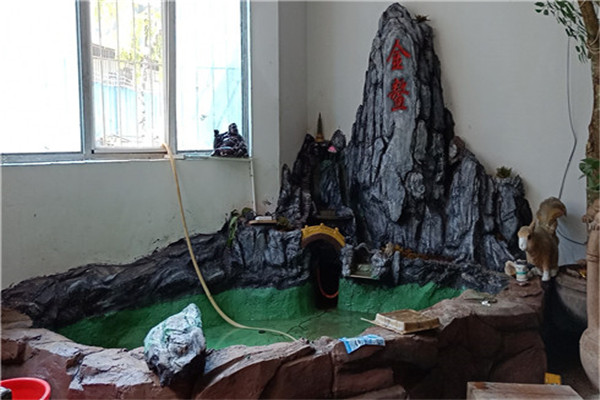
Bonsai sculpture is an ingenious combination of plant cultivation technology and garden art. It is an organic unity of landscape, basin and several frames. It is mainly composed of trees and shrubs, with rocks, people, buildings, etc. as the background, to show the beautiful scenery of giant trees in the wilderness, lush forests or ancient trees with thousands of years. There are evergreen pines and cypresses, such as five needle pine, black pine, larch, juniper, etc; Flowers and fruits include camellia, brome, June snow, longevity peach, fire thorn, pomegranate, etc; Miscellaneous trees include broad-leaved trees, shrubs such as elm, skeleton, etc. The miniature bonsai, which is the size of a wine cup, is planted in a basin with a wild state, exquisite and attractive plant shape. The cursive potted landscape refers to the shape of plants into a certain word, commonly used as elm with golden leaves, rose vine, etc. The chrysanthemum potted landscape is to use the small chrysanthemums grafted on Artemisia annua to twist the artemisia stem and form a vigorous tree trunk by manual traction; Modern green sculpture three-dimensional sculpture, also known as "three-dimensional painting", can enjoy different scenery from different angles and positions. There are combinations of rattan plants and buildings, such as green bridge columns, colorful landscape walls, etc. There are sculptures of grass and flowers, such as the charmingly naive giant panda, the beautiful peacock, the elephant with a long nose, the giraffe with a raised neck, flocks of cattle and sheep, monkeys playing on horseback, etc

Marble, granite, Hui'an stone, Qingtian stone, Shoushan stone, Guicui stone and other materials are generally used for stone carving. Granite and marble are suitable for carving large statues; Qingtian stone and Shoushan stone are rich in color, which are more suitable for small stone carvings. There are many ways to make stone carvings. According to the nature of stone materials and the habits of the carvers, stone carvings can be roughly divided into two types: first, traditional methods. Conception, composition, modeling and stone carving are all done by individuals alone. For large-scale carving of lines, the horizontal and vertical lines shall be drawn on the stone, the grid shall be made to take materials, and the simple measurement and positioning method shall be used for carving. The second is to adopt a new process, that is, first make a clay sculpture, turn it into a plaster statue, then take the plaster statue (model) as the basis, rely on the point shaped instrument, and then carve it into a stone statue.

The original main application scope of the flexible shaft machine is large-scale jade carving works that cannot be carried by the desktop computer. It is usually used with handheld devices such as the electric mill to complete the detailed work that cannot be carried out by the electric mill. Since the fixed grinding head of the desktop computer is not as flexible as the handle in handling some types of devices, many people will also choose to apply the flexible shaft machine to some smaller or more special types of devices. Due to the continuous improvement of fine requirements for jade articles, jade carvers in China are constantly looking for and trying more favorable equipment. The dental machine is the medical equipment borrowed from the dentist by the jade carver. Its flexibility is the best of all models at present, so it is mainly used for detail processing, but has little application value in heavy work.

From the perspective of development, sculpture can be divided into traditional sculpture and modern sculpture. Traditional sculpture is a visual, tactile and static three-dimensional art form molded with traditional materials; Modern sculpture uses new materials to make anti traditional four-dimensional, five-dimensional, acousto-optic, soft and dynamic sculptures. According to traditional materials, and according to environment and function, it can be divided into urban sculpture, garden sculpture, indoor sculpture, outdoor sculpture, desk sculpture, shelf sculpture, etc. There are many kinds of sculpture materials, such as clay, stone, wood, metal, gypsum, resin, ivory, etc. Then several categories were developed: wood carvings: wood carvings have a long history. Most of the early themes were centered on religion. In addition to religious icons, they were also used for the decoration of altars and religious places. In countries where wood building flourishes, wood carving develops with architecture. Modern wood carvings have quite diversified styles and features, and artists like to use abstract forms to express them. In addition, wood carving is also an important contributor to the invention of printing. Please see woodcut prints for details; Stone carving: The regions where stone carving is developed have a lot to do with where the stones suitable for carving are produced. The regions where stone carving is developed have a long history of stone carving. In the past, stone carvings were often used as decorations of gardens, signs of doorways, or architectural decorations of mausoleums. Because the stone is thick (not easy to be stolen), and the details of carvings are not easy to be damaged by wind and rain, stone carvings are mostly in outdoor environments. The common stone carving material is marble. There are clay sculptures, ice sculptures, sand sculptures, metal sculptures and pottery.

At present, most of the most influential sculptures in China and the West are made of copper. For example, Rodin's "The Thinker", "The Bronze Age", and "The Statue of Liberty", the world's top sculptures are mostly made of copper. The lines are suitable for sculpture because of the texture, plasticity, unlimited specifications, and rich color texture of copper, which are also jade sculptures The effect that wood carving and stone carving can't achieve is that jade carving can only make very small works because of the limitation of materials. Because of the limitation of wood carving technology, there is no precedent for large outdoor sculptures. The inheritor, whose bronze carving has opened a new chapter in the 5000 year history of copper.

GRC components can be widely used in the internal partitions of offices, business and residential buildings, corridors and kitchens. The production process, installation and operation are simple and easy to master; Chaozhou EPS decorative materials The market prospect is broad and suitable for investors and entrepreneurs to explore and develop. However, the outstanding problems of ordinary magnesium partition board are: poor water resistance, easy moisture absorption and halogen return on the surface, and high water content. According to long-term research, development and production experience, Hainan EPS has fundamentally improved the physical and mechanical properties and water resistance of modified magnesium lightweight composite insulation board through reasonable production process and advanced and unique modification technology. This product has low cost, high strength Long service life, excellent heat and sound insulation effect, light weight per unit volume, etc., and no need to soak in water for curing after modification. It is mainly used for building wall insulation (such as reinforced concrete wall, ceramsite hollow block filled wall, concrete hollow block wall, clay porous brick wall, etc.), EPS decorative materials customized Building roof insulation system, steel plate roof insulation, ground insulation, warehouse insulation, pavement foundation, can be widely used in many fields, such as refrigerated vehicles, square ground, airport, etc.






